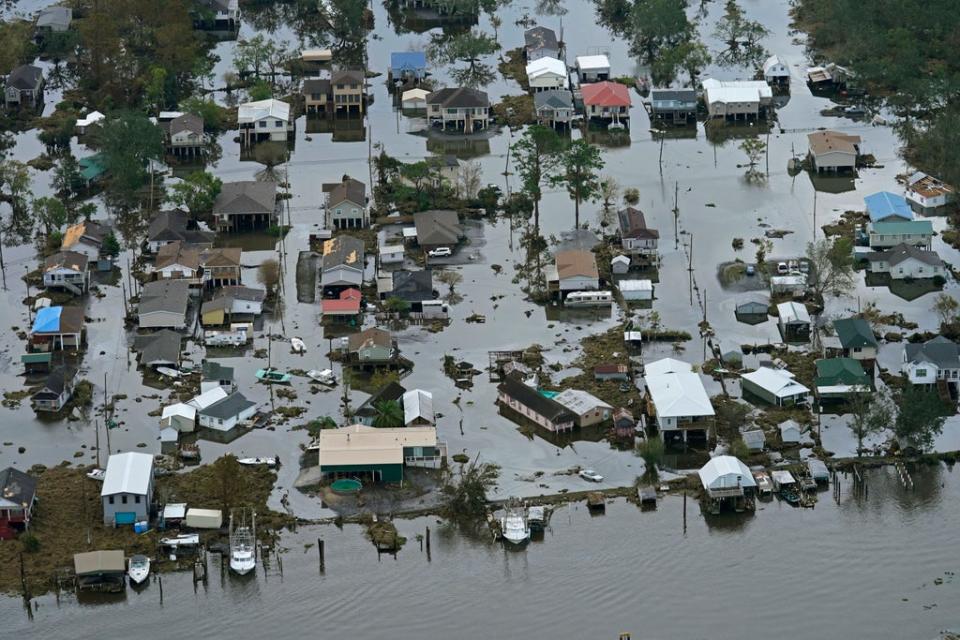Ida is retired from list of hurricane names due to level of ‘death and destruction’
Ida is being retired from the rotating list of Atlantic hurricane names due to the “death and destruction” caused by the storm, the World Meteorological Organization (WMO) announced on Wednesday.
In late August and early September last year, the category-4 storm caused 96 deaths and a record $75billion in damage across nine US states after it made landfall in Louisiana and tore up the Eastern seaboard.
Ida brought wind gusts of up to 150mph (240kph), and several feet of storm surge to the Gulf Coast, on the 16th anniversary of Hurricane Katrina. The remnants then shifted north, bringing deadly flash flooding and tornadoes from eastern Pennsylvania to New York City.
Flash flood emergencies were declared in New Jersey and New York for the first time, leaving homes, businesses and the subway system submerged. A number of people who died in the Northeast were drowned in basement apartments and in cars swept away in floodwaters.
Earlier in August, Ida triggered flooding in western Venezuela which killed 20 people and wreaked destruction across parts of the Caribbean including the Cayman Islands and Jamaica.
WMO’s Hurricane Committee said that Imani will replace Ida on the list of names which is used to help the UN body communicate warnings about extreme weather events.
Storm names are repeated every six years - unless a storm is so deadly that its name is retired. Some 94 names have now been retired from the Atlantic basin list since 1953, when the naming system began.
The WMO’s Hurricane Committee serves North America, Central America and the Caribbean and along with naming extreme storms, also provides forecasts and warnings for wind, storm surge and flooding hazards.
The group meets annually before the start of Atlantic hurricane season, which officially begins 1st June and ends 30 November - but named storms have formed before the official start in about half of the last 10-15 years, WMO reports.
It has not yet been decided whether the official date should be moved forward as the committee awaits the outcome of a US National Weather Service study.

The 2021 Atlantic hurricane season was the third most active season since record-keeping began in the mid-19th century.
For the seventh consecutive year, the first-named storm - Ana - kicked up ahead of the official start to the season, and for the second year running exhausted the the names from WMO’s rotating list - the first time this has ever happened.
The latest assessment from the UN’s Intergovernmental Panel on Climate Change found that rising global heat linked to the climate crisis is whipping tropical cyclones into more powerful storms that reach intense 4- levels, with stronger peak winds and more rainfall.
In 2021, La Niña, above-normal sea surface temperatures earlier in the season, and above-average West African Monsoon rainfall contribued to the above-average season. The phenomenon, known as the Atlantic Multidecadal Oscillation, which entered a warm phase in 1995 also played a role powering stronger, and prolonged storms. “We had more category 4 and category 5 landfalls in the USA from 2017 to 2021 than from 1963 to 2016. Hurricanes don’t care about international boundaries. We need to be prepared,” said Ken Graham, Hurricane Committee Chair and director of the WMO regional group.
WMO reports that there are on average 84 named tropical cyclones each year globally, and that in the past half century, they have caused on average 43 deaths and $78m in losses daily.
The international weather organisation intends to implement early storm warning systems for everyone in the world in the next five years.

